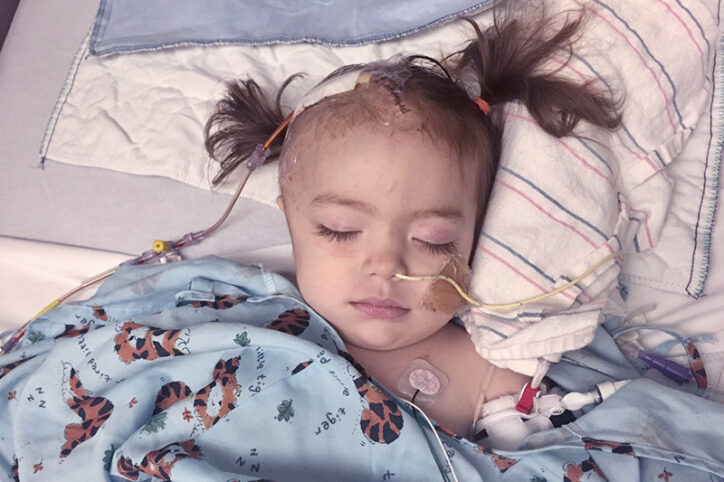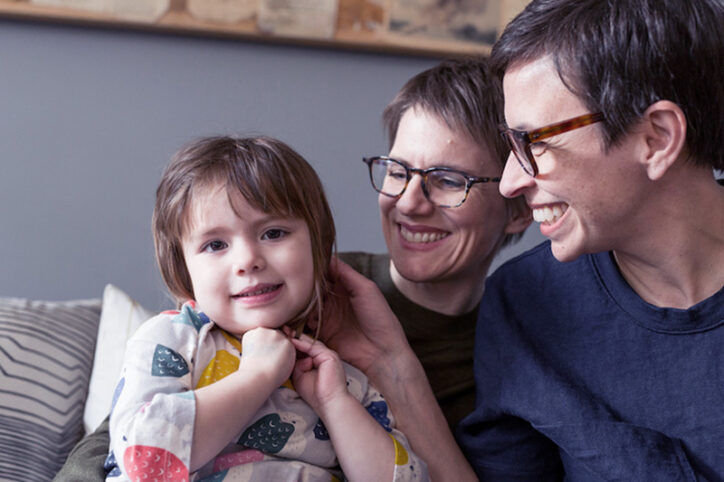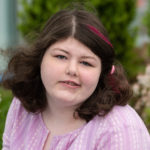DADA2: Working together to unpack a rare mystery illness

When Vanessa was a few months old, a mysterious red, bumpy rash appeared on her arms and legs. It would go away when she was sick with a virus, then come back. Although the rash disappeared for good just before she turned 2, Vanessa became anemic and increasingly fatigued. “She was fading away, losing weight, wasn’t playing,” says Katherine Bell, one of Vanessa’s mothers.
When months of fever and weight loss brought Vanessa to Boston Children’s emergency room, she was admitted for evaluation and seen by Dr. Pui Lee, a rheumatology fellow. He and Rheumatology Program director Dr. Robert Sundel diagnosed her with periodic fever syndrome — meaning Vanessa’s immune system was activated despite no apparent infection.
Rheumatic conditions can be puzzling, often requiring trial and error to find the right approach to treatment. Over the next few months, the team tried various therapies before starting Vanessa on an IL-6 inhibitor, a type of anti-inflammatory drug used in arthritis. It seemed to work: she began eating, playing, and gaining weight.
Solving a medical mystery
But a few weeks later, Vanessa had a massive stroke, and another nine days after the first. Fast action by emergency medicine physician Dr. Todd Lyons, neurosurgeon Dr. Scellig Stone, and their colleagues saved Vanessa’s life. But Bell and her wife, Nancy Mendoza, wanted to know more. What could they expect going forward? Could further strokes be prevented? And what had caused the strokes in the first place?

While Vanessa was still in the ICU, Dr. Lee had read a 2014 report describing DADA2, or deficiency of the adenosine deaminase 2 (ADA2) enzyme. The condition was marked by rash, fevers, and vasculitis (inflammation of the blood vessels) — a potential cause of stroke.
The rheumatology team connected the dots, and Vanessa became the 16th child diagnosed with DADA2 by the National Institutes of Health, which had authored the report. She was started on Enbrel, another arthritis drug that blocks inflammation by inhibiting tumor necrosis factor (TNF) and seemed to benefit some of the earlier cases.
Because the condition is so rare, Lee — and Vanessa’s parents — knew that further research would be crucial in helping Vanessa and other children. Bell combed the medical literature, but eventually hit a dead end.
“We just needed new information,” she says.
Teaming up for answers
Through a serendipitous encounter, Bell connected with a surgeon at Vanderbilt University named Chip Chambers who had two children with DADA2. Together, they established the DADA2 Foundation to accelerate research on the disorder. In 2016, they sponsored the world’s first scientific conference on DADA2; Bell moderated a concurrent family conference. Two additional conferences have since followed.
“We started from ground zero; we knew nothing going in,” says Dr. Lee, who serves on the foundation’s advisory board. “We now know that DADA2 can have many faces, and can be found in multiple clinics — rheumatology, neurology, hematology, immunology, dermatology, and many others. We also know that TNF blockers are very effective in preventing strokes.”
Inspired by Vanessa’s case, Dr. Lee has now coauthored more than 15 research articles on DADA2. In 2022, he led an international committee of 37 medical experts and three family representatives (including Bell) to develop the world’s first international consensus statement on DADA2. It was published in May — just eight years after Vanessa’s strokes.

A scientific consensus on DADA2
Drawing on learnings from the conferences and from families, the consensus statement outlines in detail when to screen a patient for DADA2, what tests and imaging studies to use, and how to care for people with each form of the condition (see sidebar).
“Consensus statements are uncommon for rare diseases because of the amount of energy it takes to get people together,” says Dr. Lee. “Because of video conferencing during the pandemic, we were able to do it in about a year.”
DEFINING DADA2
Experts now understand DADA2 to have four forms, or phenotypes, which can overlap in a given person. Each is treated differently.
An inflammatory type, marked by vasculitis and sometimes organ damage — Vanessa’s form. TNF inhibitors are vital to prevent stroke in this group.
A hematologic type, marked by bone marrow failure and low counts of one or more types of blood cells. Patients with this form may need a stem cell transplant to restore the function of their bone marrow.
An immunodeficient type, marked by low white blood cell counts and recurring and/or opportunistic infections. These patients may need immunoglobulin treatment, prophylactic antibiotics, and antiviral medications.
An asymptomatic form: Some people with ADA2 mutations do not have any apparent symptoms, but should be monitored.
Dr. Lee’s research has shown that these different forms are associated with different types of ADA2 mutations that affect the enzyme in different ways. What remains a mystery is how the mutations cause symptoms, a question Dr. Lee now hopes to tackle in his lab.
Vanessa’s journey
Vanessa hasn’t had a stroke since she started taking Enbrel. She just finished fourth grade, and she recently had a Harry Potter-themed 10th birthday party. While she doesn’t remember her strokes, she’s very aware that they’re part of who she is.
She knows that they’ve made it hard for her at school. Vanessa has severe dyslexia and attends a special-education school focused on language-based learning. “She had major strokes on both sides of her brain,” Bell says. “There was so much rewiring that had to happen.”
But she’s deeply engaged in life and talks about being a doctor, a teacher, and a fashion designer.
“She’s a happy kid, very funny and empathetic. She loves to bake, loves theater and art — she’s really creative.” This summer, she’s attending a science camp, a theater camp, and a sewing camp.

The power of doctor–family partnerships
At least 500 cases of DADA2 are now known around the world, including 14 new patients Dr. Lee is following at Boston Children’s. The DADA2 Foundation maintains a patient registry and is running an ongoing study to track patients’ health over time.
This October, the foundation will host its fourth international conference. “Being able to help get information out is so important to me,” says Bell. “There’s always new families — and more to explain because we understand more. I feel so lucky to have been involved at a time when we could begin to put the pieces together.”
“Rare diseases are inherently difficult to diagnose and manage, but it is amazing how much we can accomplish with patients and families who are driven to find a cure,” says Lee. “These partnerships are crucial to helping solve DADA2 and other rare diseases.”
Learn more about research in the Rheumatology Program at Boston Children’s.
Related Posts :
-

'On fire' with sJIA: When arthritis is much more than joint pain
Georgia is finally living her best life. Her toddler years were challenging: At 15 months old, a series of high fevers ...
-

When even experts can’t figure you out: CNS-restricted HLH
At first it seemed like motion sickness when 5-year-old Emily threw up after spinning around outside, or during car rides. ...
-

Treating inflammation in MIS-C: An evidence-based approach
Multisystem inflammatory syndrome in children (MIS-C) is a complex, post-COVID-19 spectrum of illness that has affected a small number of ...
-

Austin’s story: Raising awareness after treatment for pediatric stroke
In May, 11-year-old Austin Rizzo led the pack in a two-mile road race of his own creation. But the race, ...





